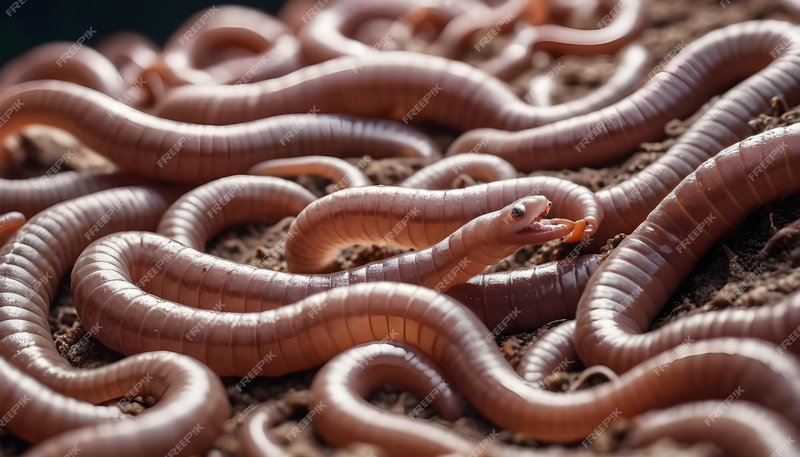
Imagine a bustling city: in summer, it’s vibrant and alive with activity, while in winter, the streets become quieter as people huddle indoors. Segmented worms, too, have a rhythm to their lives, adapting to the warmth of spring, the chill of winter, and everything in between. These seasonal behaviors offer insights into their survival strategies, reproduction cycles, and even their roles in soil health. So, let’s dig deeper into the fascinating world of segmented worms and see how they change with the seasons.
Understanding Segmented Worms
Segmented worms, such as earthworms, are fascinating creatures that belong to the phylum Annelida. Their bodies are divided into repeated sections, or segments, which is why they’re called segmented. These segments allow for greater flexibility and movement, enabling worms to burrow through soil efficiently.
These little creatures play a crucial role in our ecosystem by aerating the soil and breaking down organic matter. As they munch on decaying leaves and plant material, they help create nutrient-rich compost that nourishes plants. Their activities improve soil structure, making it easier for roots to grow and access water. You might say that segmented worms are nature’s own gardeners!
You might be wondering how these worms adapt to seasonal changes. Their behavior isn’t just about survival; it’s also about thriving in their environment. During different times of the year, you’ll notice shifts in their activity levels, feeding habits, and even reproduction cycles.
Spring Awakening: The Start of Activity
As the cold grip of winter begins to fade, segmented worms emerge from their burrows, ready to embrace the warmth of spring. This time of year is crucial for them, as they take advantage of the moist soil and rising temperatures to kickstart their activity. Spring is a busy time for these creatures; it’s when they feed actively and begin their reproductive cycles.
During spring, the soil is rich with organic matter that has decomposed over winter. Worms play a vital role in breaking down this organic material, turning it into valuable nutrients for plants. You can often find them near the surface, where they’re most active, taking in air and food. You might even spot them while gardening or walking through a park—just look for the telltale signs of their burrowing!
One interesting behavior to note in spring is the clustering of earthworms. You may wonder why they gather in groups. This phenomenon often occurs during rain, as the moisture encourages them to emerge from their burrows. By clustering together, they might be protecting themselves from predators and ensuring they have plenty of opportunities to mate.
Summer: A Time for Growth and Reproduction
As the temperatures rise, segmented worms continue their bustling activities. Summer is the peak season for reproduction, and these worms take full advantage of the warm, moist conditions to mate and lay eggs. You might be surprised to learn that earthworms are hermaphroditic, meaning each worm has both male and female reproductive organs.
After mating, worms create a cocoon where the fertilized eggs are safely stored until they hatch. This process is fascinating to observe. If you’re lucky enough to see a worm casting during summer, you’ll notice cocoons scattered about, each containing potential new life. The warm, moist soil provides an ideal environment for these eggs, and soon enough, little baby worms will emerge.
It’s essential to understand that during summer, segmented worms are also vulnerable to extreme heat. Too much sun can lead to desiccation, so they tend to burrow deeper into the ground to find cooler, moist conditions. They’re expert engineers, creating intricate tunnels that allow them to escape the heat and stay hydrated.
Autumn: Preparing for Winter
As summer fades and autumn rolls in, segmented worms begin to slow down. This season serves as a transition period, where they prepare for the upcoming colder months. The temperature starts to drop, and the soil becomes drier, signaling worms to retreat deeper into their burrows.
During autumn, earthworms take this time to stock up on food. They consume decaying leaves and organic matter, which helps them build up energy reserves for winter. Interestingly, this is also when worms become less active on the surface. You might not see them as frequently, but rest assured they are busy underground, working hard to enrich the soil for future plant growth.
Another fascinating behavior seen in autumn is the construction of deeper burrows. This adaptation is essential for survival; by digging deeper into the ground, worms can access moisture and shelter from freezing temperatures. While it might be tempting to think of them as hibernating, they are actually just conserving energy and staying alive under layers of soil.
Winter: The Dormant Period
When winter arrives, segmented worms enter a state of dormancy. The cold temperatures and frozen ground make it difficult for them to remain active. During this period, they rely on the energy reserves they’ve built up during the warmer months. You might say they’re in a deep sleep, waiting for spring to return.
Interestingly, earthworms can survive freezing temperatures by entering a state called anoxia, where their metabolic processes slow significantly. They can live in an oxygen-deprived environment for a period of time, adapting to the harsh conditions. While they may not be up and about, they’re still doing their part by helping to break down organic matter that will nourish the soil when spring returns.
Despite the cold, some species of segmented worms can be found near the soil surface, where temperatures are slightly milder. If you were to dig down into the ground, you might be surprised to find that they’re still there, just waiting patiently for the temperature to rise.
Impact of Climate Change on Seasonal Behavior
As we navigate through changing climates, the behavior patterns of segmented worms are also shifting. With warmer winters and unpredictable weather patterns, these worms may find themselves undergoing changes in their seasonal cycles.
For instance, milder winters could lead to earlier emergence in spring, disrupting their natural rhythms. This change can affect soil health, as their feeding and mating habits may not align with the growth cycles of plants. It’s a reminder of how interconnected our ecosystems are—when one piece shifts, it can have a cascading effect on others.
You might be wondering how farmers and gardeners can adapt to these changes. Understanding how segmented worms behave seasonally can empower us to create healthier soil environments. By practicing sustainable gardening and conservation methods, we can help ensure that these important creatures thrive, even in the face of climate challenges.
Seasonal behavior patterns of segmented worms offer us valuable insights into their lives and the health of our ecosystems. From their busy spring awakenings to their dormancy in winter, these little creatures play a vital role in maintaining soil vitality.
By observing their patterns and understanding their needs, we can foster environments that support their populations. Whether you’re a gardener, a farmer, or simply a nature enthusiast, appreciating the role of segmented worms can deepen your connection to the natural world. Remember, they might be small, but their impact is significant, and they’re always hard at work beneath our feet. So next time you spot a worm, take a moment to consider all the incredible things it does for our environment!

